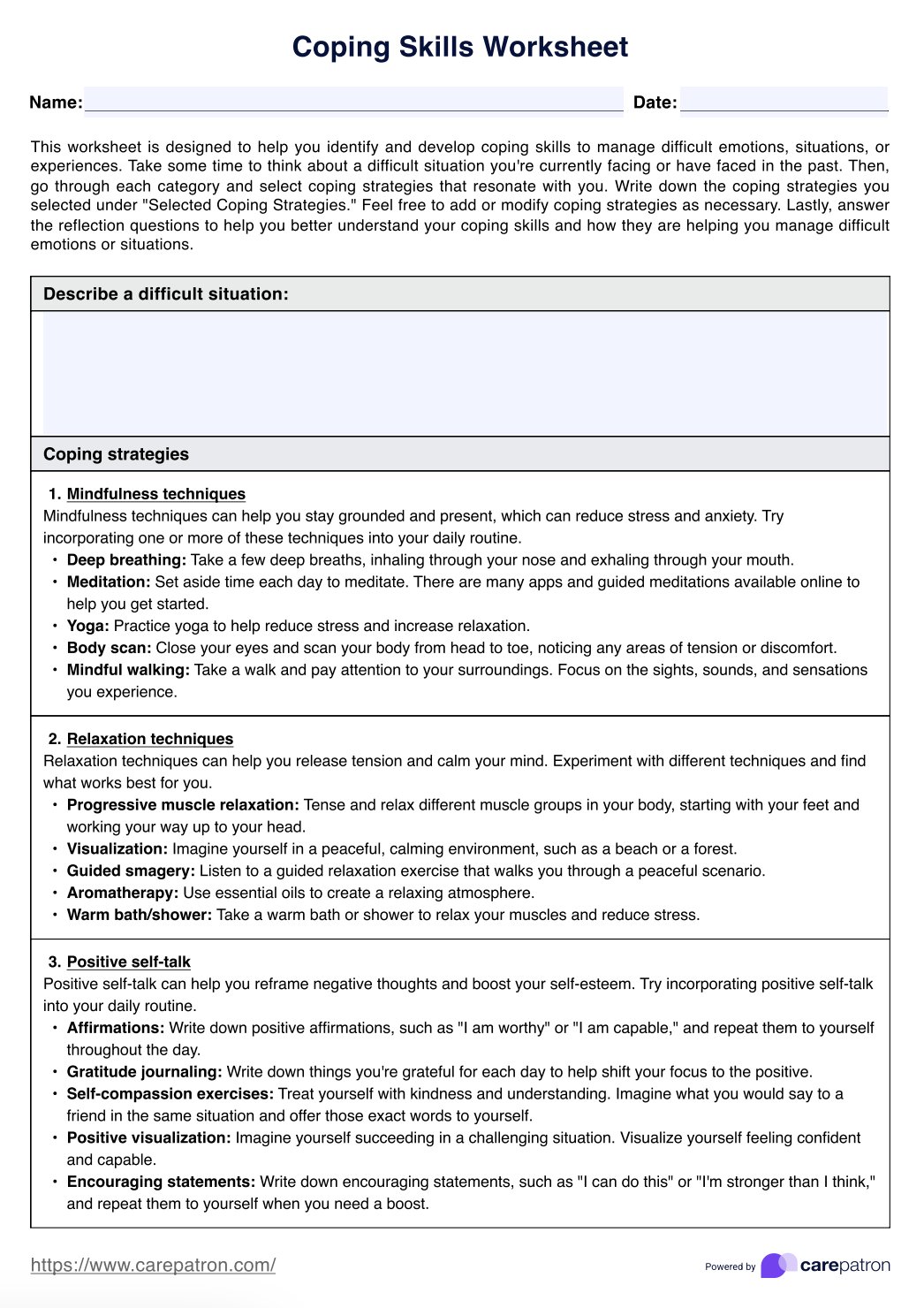Our free Coping Skills Worksheet is available on Carepatron's templates page for any professional who wants to assist clients in developing robust coping mechanisms. Remember that this worksheet is just one of many resources available to you, and there are many more that you can use for practice.

Coping Skills Worksheets
Help your clients manage stress, anxiety, or difficult emotions by incorporating this Coping Skill Worksheet into your sessions. Get it for free!
Coping Skills Worksheets Template
Commonly asked questions
The effectiveness of the Coping Skills Worksheet will depend on the individual using them and their unique needs and circumstances. However, many individuals find that using worksheets can be a helpful tool for exploring and developing healthy coping skills.
Coping skills empower clients by helping them manage stress effectively and improve emotional intelligence. By practicing relaxation techniques, such as deep breathing or meditation, clients can regulate their emotions and reduce anxiety. Developing emotional intelligence allows clients to understand and healthily respond to their feelings, leading to better decision-making. Additionally, strong coping skills enhance personal relationships by improving communication and conflict resolution, fostering deeper connections with others.
EHR and practice management software
Get started for free
*No credit card required
Free
$0/usd
Unlimited clients
Telehealth
1GB of storage
Client portal text
Automated billing and online payments











